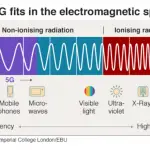Last Updated on 1 year by Francis
Amethyst is a stunning purple crystal that has been highly prized for thousands of years. It is a variety of quartz, which is one of the most abundant minerals on Earth. In this essay, we will explore the fascinating process of how amethyst quartz is made.
Amethyst quartz is a type of quartz that is renowned for its beautiful purple color. In this discussion, we will explore the process of how amethyst quartz is formed and the factors that contribute to its exquisite color.
Contents
The Formation Process of Amethyst
Amethyst is formed deep within the Earth’s crust. The process begins when magma, which is molten rock, cools and solidifies. As this happens, different minerals begin to crystallize out of the magma. Quartz is one of the most common minerals to form this way.
Over time, as the quartz crystals continue to grow, they may come into contact with other minerals and elements. This can lead to impurities in the crystal lattice, which can give rise to different colors. In the case of amethyst, the purple color comes from the presence of iron and aluminum.
The Role of Iron and Aluminum
Iron and aluminum are two of the most important elements in the formation of amethyst. When quartz crystals come into contact with these elements, they can become impregnated with tiny amounts of iron and aluminum ions. These ions can then bond with oxygen atoms in the crystal lattice, creating a purple color.
The exact shade of purple can vary depending on the concentration of these elements. In some cases, the color may be very light, almost pink. In others, it can be a deep, rich purple.
The Impact of Heat and Pressure
The formation of amethyst is also influenced by heat and pressure. As the crystals continue to grow, they may be subjected to intense heat and pressure deep within the Earth’s crust. This can cause the crystal lattice to distort, which can give rise to interesting patterns and shapes.
In some cases, the amethyst may be subjected to heat and pressure multiple times over the course of its formation. This can lead to complex and intricate patterns that are highly prized by collectors and enthusiasts.
Mining Amethyst
Once amethyst has formed, it can be found in a variety of different locations around the world. Some of the most famous sources of amethyst include Brazil, Uruguay, and Zambia. In these locations, amethyst can be found in large deposits in the ground.
Extraction Techniques
To extract amethyst from the ground, miners typically use a combination of hand tools and heavy machinery. The exact extraction techniques can vary depending on the location and the size of the deposit.
In some cases, miners may use explosives to break up the rock and make it easier to extract the amethyst. In other cases, they may use large machinery to dig out the deposit and remove the amethyst from the surrounding rock.
Sorting and Cutting
Once the amethyst has been extracted from the ground, it must be sorted and cut into the desired shape. This process can be quite labor-intensive, as each piece of amethyst must be carefully examined to determine its quality and value.
After the amethyst has been sorted, it can be cut and polished into a variety of different shapes and sizes. Some of the most common cuts for amethyst include faceted gems, cabochons, and beads.
The Role of Geologic Processes
The formation of amethyst is also influenced by a variety of geologic processes. These processes can vary depending on the location where the amethyst is forming. For example, in some locations, amethyst may be formed through hydrothermal processes, where hot water and minerals are forced into cracks and crevices in the rock.
In other locations, amethyst may be formed through volcanic processes, where magma is forced up through the Earth’s crust and cools to form rocks like granite and basalt. In these rocks, quartz crystals can form, and over time, these crystals may become impregnated with iron and aluminum ions to create amethyst.
The Importance of Sustainability
As with any natural resource, it is important to consider the sustainability of amethyst mining. In some locations, amethyst deposits may be overexploited, leading to environmental damage and a depletion of the resource.
To address these concerns, some mining companies and organizations are working to promote sustainable mining practices. This may include measures like limiting the number of mines in a particular area, using environmentally friendly extraction techniques, and promoting responsible waste management.
FAQs – How is Amethyst quartz made?
What is amethyst quartz?
Amethyst quartz is a variety of quartz mineral that is purple in color, ranging from pale lilac to deep purple. It is a popular gemstone that has been used in jewelry for centuries. Amethyst quartz is found in many parts of the world, including Brazil, Uruguay, Russia, and Zambia, among others.
How is amethyst quartz formed?
Amethyst quartz is formed through a process of crystallization. It typically forms in geodes, which are hollow cavities within rocks that are lined with crystals. The formation of amethyst quartz requires the presence of silica-rich solutions that contain iron, aluminum, and other minerals. Over time, these solutions infiltrate the geode and begin to crystallize, creating the characteristic purple hue of amethyst quartz.
What gives amethyst quartz its purple color?
The purple color of amethyst quartz is caused by iron impurities within the crystal lattice. Specifically, the coloration is due to the presence of Fe3+ ions, which absorb certain wavelengths of light and reflect others, giving the crystal its distinctive purple hue. The intensity of the color can vary depending on the amount of iron present in the crystal and the conditions under which it was formed.
How is amethyst quartz mined?
Amethyst quartz is typically mined from geodes in underground mines. The geodes are usually found in areas with volcanic activity, such as lava beds, where they form within cavities in volcanic rocks. Miners use specialized equipment to remove the geodes from the surrounding rock, carefully extracting them without damaging the crystals inside. The geodes are then cleaned and the crystals are sorted by size and quality.
What are the uses of amethyst quartz?
Amethyst quartz is primarily used as a gemstone in jewelry, but it also has a variety of other uses. Many people believe that it has healing properties and can be used to promote calmness, clarity, and relaxation. It is also used in meditation and other spiritual practices. Amethyst quartz is sometimes used in industrial applications, such as cutting tools and abrasive materials, due to its hardness and durability.

.jpg)
.jpg)
.jpg)



